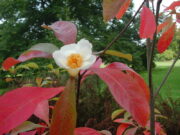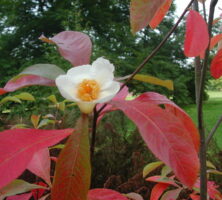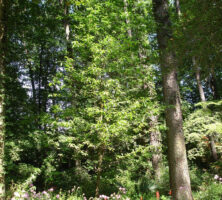The Franklin tree or lost camellia (Franklinia alatamaha) is an unusually beautiful tree, once native only to Georgia, that is also one of the rarest trees in the world. Discovered in the mid-eighteenth century, the Franklin tree was last recorded in the wild by a nurseryman and plant collector in 1803. All known specimens today are in cultivation.
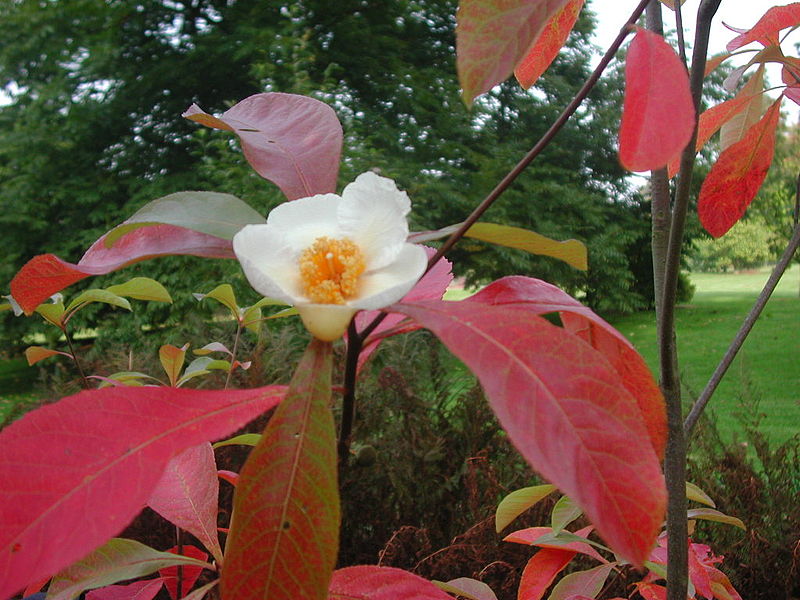
Photograph from Francine Riez, Wikimedia
John Bartram and his son William discovered the Franklin tree growing along the banks of Georgia’s Altamaha River near Darien, in McIntosh County, in 1765. In his book Travels, William Bartram describes it as a beautiful shrub that appeared to be related to Gordonia lasianthus (loblolly bay), but with larger and more fragrant flowers. They named the tree in honor of their friend Benjamin Franklin and the river beside which they had found it (the species name, alatamaha, reflects the Bartrams’ variant spelling of Altamaha).
William Bartram again saw the tree in the 1770s and noted that the only spot where he had seen it in all of his explorations was on the two- to three-acre site along the Altamaha River, where it grew in abundance. Since the last definitive sighting of the tree in nature in 1803, many have continued to search for the tree, and some accounts describe spotting it along the Altamaha River as late as the 1840s. Fortunately, the Bartrams had taken plants and seeds home to Philadelphia, where they propagated the plant. All Franklin trees today are descendants of the Bartrams’ specimens.
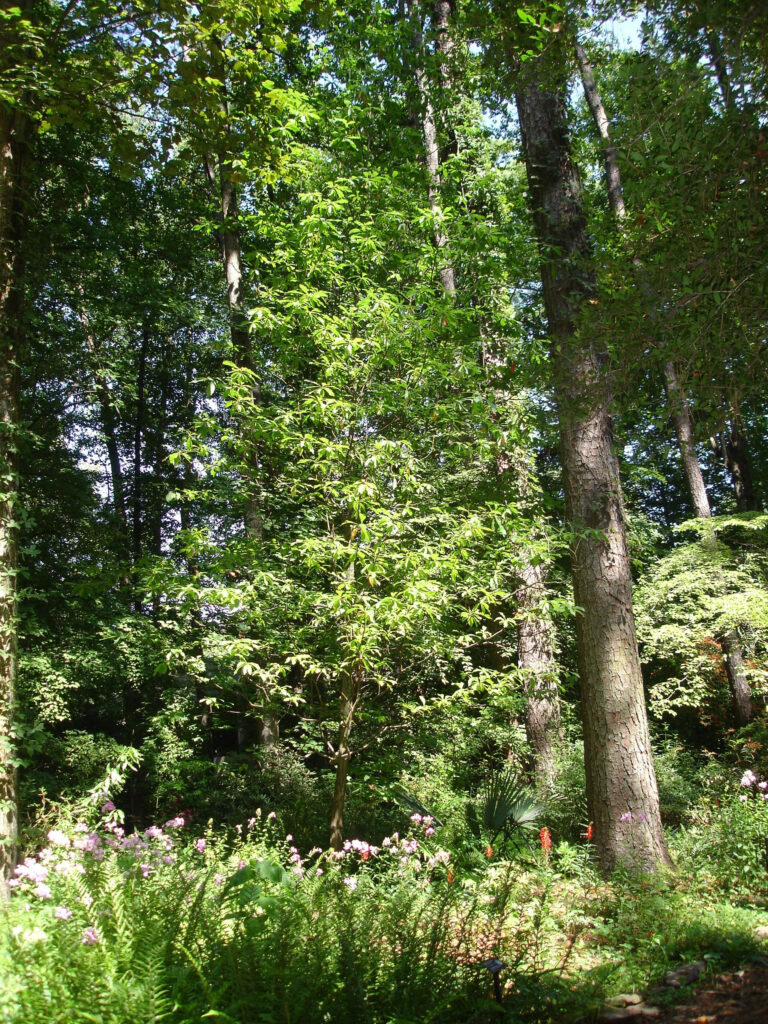
Courtesy of Atlanta History Center.
The Franklinia is a deciduous small tree or large shrub growing fifteen to twenty feet high and ten to fifteen feet wide, with elongated, dark green leaves that turn red, orange, or pink in the fall. Its most striking feature is its showy two- to three-inch snow-white flowers, with clusters of golden yellow stamens in the centers. The tree flowers from late summer until frost.
Franklinia can be propagated by seeds or by rooted cuttings and is grown by gardeners and horticulturalists in various locations in the eastern United States. In 2008 the Georgia Forestry Commission named a specimen in the Quarry Garden at the Atlanta History Center in Atlanta as the state champion, for being the largest of its species in Georgia.
Today efforts are being made to restore the tree to the wild by planting specimens near the site where they were originally discovered.
In 1969 a set of four U.S. postal stamps was issued, each bearing a plant associated with one of the four regions of the country. Franklinia was chosen to represent the South.


